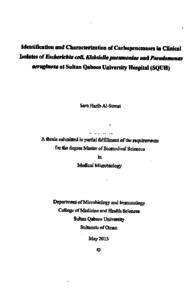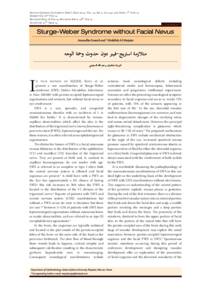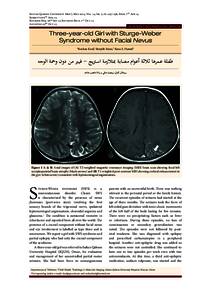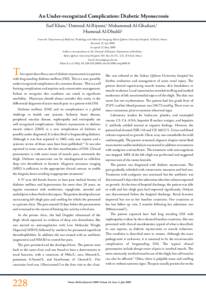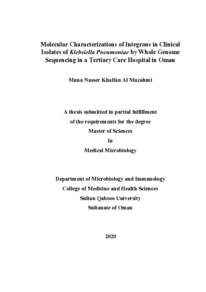Document
Identification and characterization of carbapenemases in clinical isolates of escherichia coli, klebsiella pneumoniae and pseudomonas aeruginosa at Sultan Qaboos University Hospital (SQUH)
Publisher
Sultan Qaboos University
Gregorian
2015
Language
English
Subject
English abstract
Carbapenems are the last resort antibiotics that are reserved for treating life threatening infections caused by multidrug resistant Gram-negative bacilli. However, in the recent past, emergence of carbapenem resistance due to carbapenemase production has been reported in Gram-negative bacilli worldwide.
A total of 361 non-repetitive clinical isolates of Escherichia coli (n=152), Klebsiella pneumoniae (n=106) and Pseudomonas aeruginosa (n=103) recovered from various clinical specimens at Sultan Qaboos University Hospital (SQUH) were collected. Enterobacterial isolates were screened with imipenem (10 ug) and meropenem (10 ug) as screening substrates, while P. aeruginosa isolates were screened with imipenem (10 ug) as the screening substrate. Screen positive isolates were subjected to four phenotypic confirmatory tests viz: Modified Hodge Test (MHT), Combined Disc Test (CDT), Double Disc Synergy Test (DDST) and Extended EDTA Disc Synergy Test (EDST). In addition, PCR was carried out to identify the type of carbapenemases in the screen positive isolates using specific primers, while sequencing of the amplicons was done to identify the subtypes. Clonal relatedness among carbapenemase positive isolates was investigated by Pulsed Field Gel Electrophoresis (PFGE).
A total of 42/361 (11.6%) of all the isolates were screen positive for carbapenemase production. As many as 27/42 (64.3%) of these screen positive isolates were confirmed by MHT to be carbapenemase producers. Of these 27 isolates, 26 were shown by PCR to be harboring carbapenemase genes.
All the 3 phenotypic tests viz.: EDTA-CDT, DDST and eEDST had 100% sensitivity and ~86% specificity in identifying metallo-beta-lactamases (MBLs) in Enterobacteriaceae isolates. On the other hand, for detection of MBLs in P. aeruginosa isolates, EDTA-CDT had 100% sensitivity but only 40% specificity, while DDST and eEDST though 100% specific had sensitivity of 50% and ~67%, respectively.
Carbapenemase genes were identified in 20/21 of the screen positive Enterobacteriaceae isolates. Out of these 20 isolates, 12 isolates harbored NDM, 6 isolates harbored OXA-48-like genes, while 2 isolates harbored NDM as well as OXA-48-like genes. Of the 21 screen positive P. aeruginosa isolates, 6 harbored carbapenemase gene. All of these isolates carried VIM carbapenemaşe gene. Sequencing of NDM gene for subtyping revealed that 11 isolates had NDM-1 subtype, and one isolate had NDM-7. Sequencing of OXA-48-like genes revealed that 4 isolates harbored OXA-232 and 2 isolates harbored OXA-181. Two isolates harbored both NDM-1 and OXA-232 variants. Genotyping by PFGE showed that most carbapenemase producers belonged to diverse clones. All carbapenemase producing P. aeruginosa were susceptible to colistin. On the other hand, 85% of the carbapenemase-producing Enterobacteriaceae were susceptible to colistin and only 45% to tigecycline.
Member of
Resource URL
Arabic abstract
الكاربابينيمس (carbapenems) هي المضادات الحيوية التي تعتبر الملاذ الأخير لعلاج العدوى التي تهدد الحياة والتي تسببها العصيات سلبية الغرام متعددة المقاومة للمضادات الحيوية. ومع ذلك في الماضي القريب، تم الإبلاغ عن ظهور عصيات سلبية الجرام مقاومة للكاربابينيمس carbapenems) بسبب انتاج انزيم الكاربابينيميز (carbapenemase) في جميع أنحاء العالم.
جمعت خلال فترة البحث 361 من العزلات البكتيرية السريرية غير المتكررة من نوع ;Escherichia col (ن = 152)، Klebsiella pneumoniae (ن = 106)، Pseudomonas aeruginosa (ن = 103)، والتي استعيدت من مختلف العينات السريرية في مستشفى جامعة السلطان قابوس (SQUII). تم عرض العزلات من نوع Enterobacteriaceae لفحص مبدئي (screening test) يختبر احتمالية انتاج انزيم الكاربابينيمز(carbapenemase) باستخدام كل من الايميبينيم (imipenem) (10 ميكروغرام) والميرويينيم (meropenem) (10 ميكروغرام) ، في حين تم فحص P . aeruginosa باستخدام الايميبينيم (imipenem) (10ميكروغرام). وقد تم عرض العزلات البكتيرية التي أظهرت نتائج إيجابية في الفحص المبدئي لأربعة إختبارات تاكيدية مظهرية (phenotypic confirmatory tests) ، والتي تشمل: (MITT)، ( DDST ) ، ( CDT ) و (eEDST). بالإضافة إلى ذلك، تم إجراء الإختبار الجيني PCR لتحديد نوع الكاربايينيميز (carbapenemases) في جميع العزلات التي أظهرت نتائج إيجابية في الفحص المبدئي، في حين تم إجراء اختبار (sequencing) لتحديد الأنواع الفرعية. ولقد تم فحص الارتباط النسيلي بين العزلات المنتجة للكاربابينيميز (carbapenemase) بواسطة اختبار (PFGE).
جمعت خلال فترة البحث 361 من العزلات البكتيرية السريرية غير المتكررة من نوع ;Escherichia col (ن = 152)، Klebsiella pneumoniae (ن = 106)، Pseudomonas aeruginosa (ن = 103)، والتي استعيدت من مختلف العينات السريرية في مستشفى جامعة السلطان قابوس (SQUII). تم عرض العزلات من نوع Enterobacteriaceae لفحص مبدئي (screening test) يختبر احتمالية انتاج انزيم الكاربابينيمز(carbapenemase) باستخدام كل من الايميبينيم (imipenem) (10 ميكروغرام) والميرويينيم (meropenem) (10 ميكروغرام) ، في حين تم فحص P . aeruginosa باستخدام الايميبينيم (imipenem) (10ميكروغرام). وقد تم عرض العزلات البكتيرية التي أظهرت نتائج إيجابية في الفحص المبدئي لأربعة إختبارات تاكيدية مظهرية (phenotypic confirmatory tests) ، والتي تشمل: (MITT)، ( DDST ) ، ( CDT ) و (eEDST). بالإضافة إلى ذلك، تم إجراء الإختبار الجيني PCR لتحديد نوع الكاربايينيميز (carbapenemases) في جميع العزلات التي أظهرت نتائج إيجابية في الفحص المبدئي، في حين تم إجراء اختبار (sequencing) لتحديد الأنواع الفرعية. ولقد تم فحص الارتباط النسيلي بين العزلات المنتجة للكاربابينيميز (carbapenemase) بواسطة اختبار (PFGE).
Category
Theses and Dissertations

